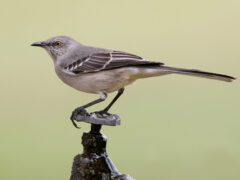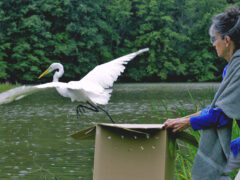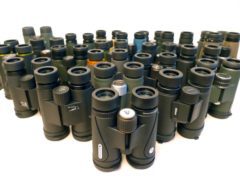The Four Keys to ID
- Size & Shape
A compact diving duck with a distinctive head shape—a sloping forehead and peaked rear crown. The crown flattens when they are diving. In flight, Ring-necked Ducks appear large-headed with a thin neck and a short, round body.
Relative Size
Smaller than a Mallard or Redhead; about the same size as Lesser Scaup.

 crow-sized
crow-sizedMeasurements
- Both Sexes
- Length: 15.3-18.1 in (39-46 cm)
- Weight: 17.3-32.1 oz (490-910 g)
- Wingspan: 24.4-24.8 in (62-63 cm)
© Mark R Johnson / Macaulay Library
- Color Pattern
Males are bold black-and-gray ducks with a dark head, black back, and gray sides with a white hash mark on the chest. Females are rich brown with a contrastingly pale cheek, a white patch near the bill, and a whitish eyering. Adult males have a prominent white ring on the bill.
© Ryan Schain / Macaulay Library - Behavior
Ring-necked Ducks are often in small flocks and pairs, diving to feed on mollusks, invertebrates, and submerged aquatic vegetation. Sometimes they flock with scaup; other times you may see them with dabbling ducks.
- Habitat
Look for Ring-necked Ducks on smaller bodies of water than other diving ducks. In winter and on migration, this can include beaver ponds, small lakes, marshes, cattle ponds, or even flooded agricultural fields across North America. Ring-necked Ducks breed in freshwater marshes, bogs, and other shallow, often acidic wetlands.
© Kathryn Keith / Macaulay Library
























































